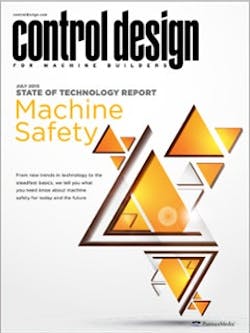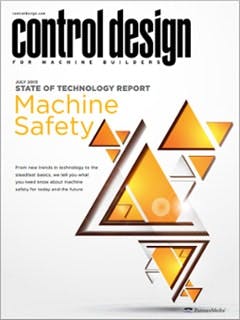Make risk assessment your critical first step in functional machine safety design
Machine safety protects employees from unsafe conditions and known hazards, reduces costs such as medical and insurance expenses, helps companies to comply with regional or international regulations and improves productivity or avoids complete machine shutdown.
Sometimes, machine safety guidance can be conflicting, such as conceptual differences in the risk assessment and grading process between a PMMI standard and an RIA standard, and that can be confusing.
Companies make safety a top priority, but incidents continue to happen. Machine guards get bypassed because what is under them needs a lot more attention than the designer intended. For example, jams happen. Bypassing a guard for ease of machine use is unacceptable behavior, but there it is, unless your facility operates autonomously without any human interaction.
Safety devices can be scary to engineers and maintenance crews, as well. People often hold their breath the second the word “safety” is mentioned. When safety was in its infancy, many companies thought compliance meant putting up a fence and a switch on the door. When human operators started disabling barriers and cheating the technology to avoid production stoppages, it sometimes meant dismemberment or, in the worst case, death. Devices now allow machines to be safer and remain productive.
The U.S. Department of Labor’s Occupational Safety and Health Administration (OSHA) provides the standards that apply to machine guarding of production equipment in the United States. The lockout/tagout (LOTO) standard applies when employees perform maintenance and service to production equipment, and it requires the prevention of unexpected energization of equipment. That’s done by removing all energy from a machine and locking the energy sources in the off state whenever employees must be in a potentially hazardous location.
The exception to LOTO allows alternative measures when machine access is required during minor servicing. Alternative measures include integrated machine safety solutions. LOTO is extremely safe, but the problem is that somebody has to actually do it. OSHA lists the failure to control hazardous energy among its top citations. Users often overcompensate for this by putting out an edict to the OEM or system integrator to set the bar very high, which often increases the cost unnecessarily.
The problem is that engineers assigned to implement machine safety on equipment aren’t comfortable with it.
Functional safety design includes multiple steps that assess risks and anticipate safety needs. It’s important to assess risks by identifying limits and hazards early in the process so the safety is designed into the machine, rather than added as an afterthought.
This State of Technology Report explores in greater detail these and other technology trends in the arena of machine safety. Drawn from the most recent articles published in the pages of Control Design, this special report includes articles on emerging trends and basic primers illustrating the latest technology in action. We hope that you find it useful.
About the Author
Control Design
Control Design

Leaders relevant to this article:

